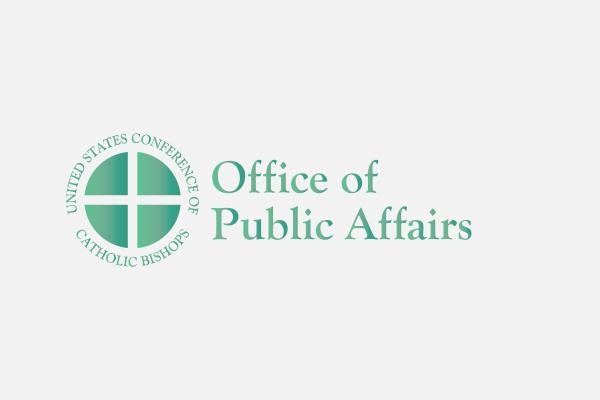Lutheran-Catholic Dialogue Finalizes Text on The Church as Koinonia of Salvation
WASHINGTON (May 3, 2004) -- The final meeting of the Tenth Round of the Lutheran-Catholic Dialogue in the United States met April 22 – 25 at St. John's Cathedral, Milwaukee, WI. The principal task of the meeting was to finalize a text on The Church as Koinonia of Salvation: Its Structures and Minist
WASHINGTON (May 3, 2004) -- The final meeting of the Tenth Round of the Lutheran-Catholic Dialogue in the United States met April 22 – 25 at St. John's Cathedral, Milwaukee, WI. The principal task of the meeting was to finalize a text on The Church as Koinonia of Salvation: Its Structures and Ministries. The meeting also provided an opportunity to celebrate this dialogue, and the fifth anniversary of the signing of the Joint Declaration on the Doctrine of Justification in a service at St. John's Cathedral, April 23, with Presiding Bishop of the Evangelical Lutheran Church in American, Mark Hanson preaching. Archbishop Timothy Dolan of Milwaukee welcomed the members of the dialogue to the Cathedral, and Bishops Charles Maahs and Richard Sklba, cochairs of the dialogue, presided at the ecumenical celebration.
The 1999 signing of the Joint Declaration on the Doctrine of Justification by the Holy See and the Lutheran World Federation has marked a high watermark in Lutheran Catholic relations, resolving the problem of grace and good works that was at the heart of Reformation disagreements. On the basis of this agreement, scholars representing the churches have been able to go back to the theological work of applying this agreement to other issues that must be resolved if full communion is to be achieved. While this text does not call for full mutual recognition of ordained ministries or the integration of ecclesial structures, it proposes important new clarifications and pastoral steps which will serve the pilgrimage toward full unity.
The new dialogue text is a particularly long statement on the Church, compared with earlier contributions of this dialogue. It provides over 100 pages of conclusions, with the biblical, historical and theological foundations for these recommendations. The text carefully links the biblical doctrine of justification to the development of the Church in the New Testament as a community of salvation, whose structures and ministries serve the Church's mission to the human family.
A detailed exposition is given to the development of the ministries and structures in the church: councils, dioceses, parishes, bishops, presbyters and the Petrine ministry. The common history prior to the Reformation is accompanied by a clarification of the differences in theology both before and after the Reformation, showing where a common core of the Christian faith and practice found different expressions in separate Lutheran and Catholic developments. The developments in the episcopacy, congregational life and the understanding and church structures from the Reformation and in recent ecumenical rapprochement are outlined. Both convergences and remaining questions are presented, in the context of previous agreements both on justification and on structures and ministries in the Church.
The text proposes nine conclusions on the basis of an understanding of God's work of salvation in and through the Church. Both churches have congregations and parishes, presbyters (pastors and priests) and bishops, intermediate structures: synods/dioceses and episcopal conferences/national churches, as well as structures serving universal communion. Seen through the lens of communion ecclesiology and in the light of the churches' agreement on justification, these differences in structure seem to be complimentary rather than exclusive of one another. The different theologies can be seen as moving closer together, if it is recognized that both churches see in the other elements of the apostolic ministry, if not yet fully reconciled, and acknowledge the woundedness of their own church as long as ordained ministries remain unreconciled.
The Catholic Church recognizes the real, if imperfect communion with other Christians and their churches. This dialogue proposes that the ministries and structures of Lutherans, in particular, be recognized as authentic ministries of the Gospel in service to the communion of the Church, even if not yet in perfect communion with the Catholic Church. The dialogue goes on to endorse Pope John Paul's call for reassessing how the papacy might better serve the unity of the Church, using the concerns of earlier rounds of this dialogue about how it can manifest more clearly its subjugation to the Gospel in service to the koinonia of salvation. It also calls Lutherans to reconsider the worldwide ministry of communion, which Catholics recognize in the Petrine ministry.
The text ends in recommendations on what the ministers of the churches can do now to witness to the level of communion that exists, as the pilgrimage toward full communion proceeds. Joint retreats, pastoral letters, public witness already occur among bishops, and these are encouraged to expand. Prayer, study and common service among priests and pastors can be intensified and more widely developed. The laity is involved together in catechesis, evangelization, peace and justice ventures, social ministry and participation in each others' assemblies. All of these collaborative ventures demonstrate the level of communion in ministries and structures that exist, and further the witness of the Church as a communion of salvation.
The meeting also discussed topics for the next, eleventh round of the dialogue, to be begun in 2005. The dialogue also sponsored an academic forum at Marquette University in which the faculty had an opportunity to study and critique the dialogue results. An evening of public discussion on the theme took place at the Lutheran Church of the Redemption in Wauwatosa, Wisconsin. The dialogue followed its regular practice of attending Catholic Sunday Mass on Saturday and Lutheran Liturgy on Sunday.

